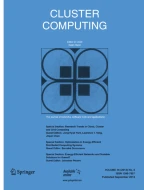Abstract
In response to a joint call from US’s NSF and UK’s EPSRC for applications that aim to utilize the combined computational resources of the US and UK, three computational science groups from UCL, Tufts and Brown Universities teamed up with a middleware team from NIU/Argonne to meet the challenge. Although the groups had three distinct codes and aims, the projects had the underlying common feature that they were comprised of large-scale distributed applications which required high-end networking and advanced middleware in order to be effectively deployed. For example, cross-site runs were found to be a very effective strategy to overcome the limitations of a single resource.
The seamless federation of a grid-of-grids remains difficult. Even if interoperability at the middleware and software stack levels were to exist, it would not guarantee that the federated grids can be utilized for large scale distributed applications. There are important additional requirements for example, compatible and consistent usage policy, automated advanced reservations and most important of all co-scheduling. This paper outlines the scientific motivation and describes why distributed resources are critical for all three projects. It documents the challenges encountered in using a grid-of-grids and some of the solutions devised in response.
Similar content being viewed by others
References
Blake, R., Coveney, P.V., Clarke, P., Pickles, S.M.: The teragyroid experiment—supercomputing 2003. Sci. Program. 13(1), 1–17 (2005)
Chin, J., Coveney, P.V.: Chirality and domain growth in the gyroid mesophase, preprint (2005)
Fowler, P., Jha, S., Coveney, P.V.: Grid-based steered thermodynamic integration accelerates the calculation of binding free energies. Phil. Trans. Roy. Soc. London A 363(1833), 1999–2015 (2005), http://www.pubs.royalscoc.ac.uk/philtransa.shtml
Allen, G., Goodale, T., Russell, M., Seidel, E., Shalf, J.: Classifying and enabling grid applications. In: Grid Computing: Making the Global Infrastructure a Reality, p. 601. Wiley (2004)
Chin, J., Harvey, M.J., Jha, S., Coveney, P.V.: Scientific grid computing: the first generation. Comput. Sci. Eng. 10(2), 24–32 (2005)
Sherwin, S., Formaggia, L., Peiro, J., Franke, V.: Computational modelling of 1D blood flow with variable mechanical properties in the human arterial system. Int. J. Num. Meth. Fluids 43, 673 (2003)
Karonis, N., Toonen, B., Foster, I.: MPICH-G2: A grid-enabled implementation of the message passing interface. J. Parallel Distrib. Comput. 63, 551–563 (2003)
Lubensky, D.K., Nelson, D.R.: Phys. Rev. E 65, 31917 (1999)
Metzler, R., Klafter, J.: Biophys. J. 85, 2776 (2003)
Howorka, S., Bayley, H.: Biophys. J. 83, 3202 (2002)
Meller, A., et al.: Phys. Rev. Lett. 86, 3435 (2003)
Sauer-Budge, A.F., et al.: Phys. Rev. Lett. 90(23), 238101 (2003)
Karplus, M., McCammon, J.A.: Molecular dynamics simulations of biomolecules. Nat. Struct. Biol. 9(9), 646–652 (2002)
Jha, S., Coveney, P.V., Harvey, M.J., Pinning, R.: SPICE: simulated pore interactive computing environment. Proceedings of the 2005 ACM/IEEE conference on Supercomputing, p. 70 (2005), dx.doi.org/10.1109/SC.2005.65
Jha, S., Harvey, M.J., Coveney, P.V., Pezzi, N., Pickles, S., Pinning, R.L., Clarke, P.: Simulated pore interactive computing environment (SPICE)—using grid computing to understand DNA translocation across protein nanopores embedded in lipid membranes. Proceedings of the UK e-Science All Hands Meeting, 19–22 September 2005, http://www.allhands.org.uk/2005/proceedings/papers/455.pdf
Saffman, P.: Vortex Dynamics. Cambridge University Press, Cambridge (1995)
Finn, L., Boghosian, B., Kottke, C.: Vortex core identification in viscous hydrodynamics. Phil. Trans. Roy. Soc. A 363, 1937–1948 (2005)
Finn, L., Boghosian, B.: A global variational approach to vortex core identification. Physica A 362, 11–16 (2006)
Boghosian, B., Finn, L., Coveney, P.V.: Moving the data to the computation: multi-site distributed parallel computation. RealityGrid, Tech. Rep. (2006), http://www.realitygrid.org/publications/GD3.pdf
Kale, L., et al.: J. Comput. Phys. 151, 283–312 (1999)
Humphrey, W., Dalke, A., Schulten, K.: VMD—visual molecular dynamics. J. Mol. Graph. 14, 33–38 (1996)
JISC: UKLight switched optical lightpath network, http://www.uklight
Carson, M., Santay, D.: NISTNet—a Linux-based network emulation tool. Comput. Commun. Rev. 6 (2003)
Pickles, S., et al.: The RealityGrid computational steering API version 1.1, http://www.sve.man.ac.uk/Research/AtoZ/RealityGrid/Steering/ReG_steering_api.pdf
Chin, J., Harting, J., Jha, S., Coveney, P.V., Porter, A.R., Pickles, S.M.: Contemp. Phys. 44, 417–432 (2003)
Karonis, N., de Supinski, B., Foster, I., Gropp, W., Lusk, E., Bresnahan, J.: Exploiting hierarchy in parallel computer networks to optimize collective operation performance. In: Fourteenth International Parallel and Distributed Processing Symposium (IPDPS’00), pp. 377–384. Cancun, Mexico, 1–5 May 2000
Allen, G., Dramlitsch, T., Foster, I., Karonis, N.T., Ripeanu, M., Seidel, E., Toonen, B.: Supporting efficient execution in heterogenous distributed computing environments with Cactus and Globus. Proceedings of the 2001 ACM/IEEE conference on Supercomputing, Denver, CO. Gordon Bell Prize Winner, Special Category (2001)
Hargrove, W.W., Hoffman, F.M., Mahinthakumar, G., Karonis, N.: Multivariate geographic clustering in a MetaComputing environment using Globus. Proceedings of the 1999 ACM/IEEE conference on Supercomputing, Portland, OR (1999)
Karonis, N., Papka, M., Binns, J., Bresnahan, J., Insley, J., Jones, D., Link, J.: High-resolution remote rendering of large datasets in a collaborative environment. Futur. Gener. Comput. Syst. (FGCS) 19(6), 909–917 (2003)
Mahinthakumar, K., Sayeed, M., Karonis, N.: Grid enabled solution of groundwater inverse problems on the TeraGrid network. In: High Performance Computing Symposium. Huntsville, Alabama, 2–6 April 2006
Gabriel, E., Fagg, G.E., Boscilca, G., Angskun, T., Dongarra, J.J., Squyres, J.M., Sahay, V., Kambadur, P., Barrett, B., Lumsdaine, A., Castain, R.H., Daniel, D.J., Graham, R.L., Woodall, T.S.: OpenMPI: goals, concept and design of a next generations MPI implementation. In: 11th European PVM/MPI Users Group Meeting. ser. Budapest, Hungary (September 2004)
Grid Resource Allocation Agreement Protocol Working Group: https://forge.gridforum.org/projects/graap-wg, http://www.fz-juelich.de/zam/RD/coop/ggf/graap/
McLaren, J., McKeown, M.: HARC: highly available robust co-scheduler, e-print http://www.realitygrid.org/publications/HARC.pdf
G-Lambda: Coordination of a Grid Scheduler and Lambda Path Service over GMPLS, http://www.gtrc.aist.go.jp/g-lambda/
A Meta-Scheduling Service for Co-allocating Arbitrary Types of Resources: http://www.coregrid.net/mambo/images/stories/TechnicalReports/tr-0010.pdf
Grid Interoperation Now (GIN): https://forge.gridforum.org/sf/projects/gin-cg
The Application Hosting Environment: http://www.realitygrid.org/AHE
U.O.S.C. Information Sciences Institute: rFC 793: Transmission Control Protocol 1981, http://rfc.net/rfc793.html
Author information
Authors and Affiliations
Corresponding author
Rights and permissions
About this article
Cite this article
Boghosian, B., Coveney, P., Dong, S. et al. NEKTAR, SPICE and Vortonics: using federated grids for large scale scientific applications. Cluster Comput 10, 351–364 (2007). https://doi.org/10.1007/s10586-007-0029-4
Published:
Issue Date:
DOI: https://doi.org/10.1007/s10586-007-0029-4
